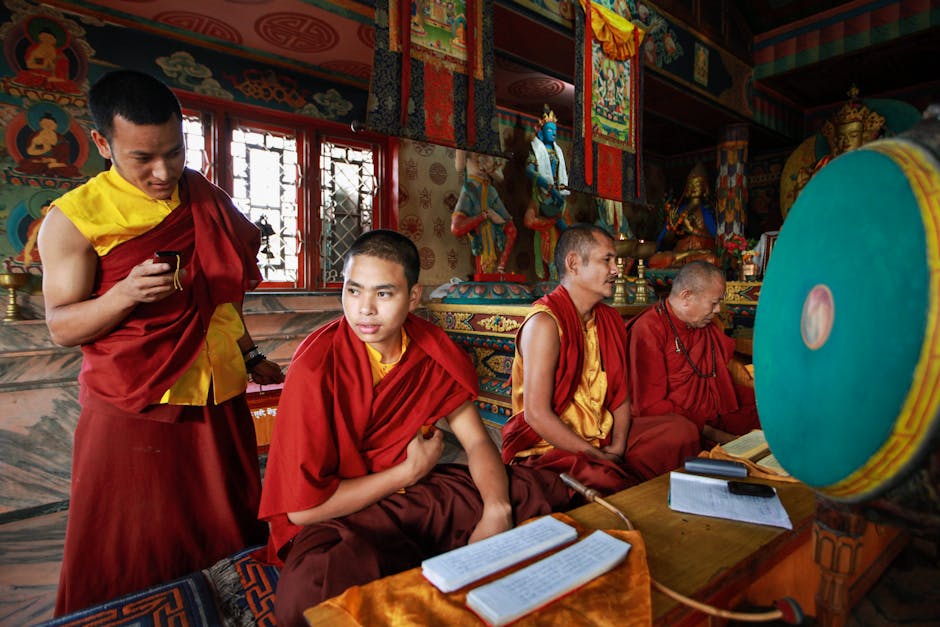Nestled in the crimson robes, the monk at the Kirti monastery in Aba, Sichuan province, strides towards us, prayer beads flowing through his fingers like a rhythmic melody. A risky decision indeed, as eight shadowy figures trail behind us, their identities obscured. Yet, the monk, undeterred by potential repercussions, shares a quiet revelation, “Things here are not good for us.”
For decades, this monastery has been a symbol of Tibetan resilience, a beacon of resistance against Chinese dominion. The echoes of Tibetan protests reverberate through its walls, resonating with defiance. Even now, as we stand in its midst, a police station looms at the entrance, alongside whirring prayer wheels and a watchful maze of surveillance cameras.
“They do not have a good heart,” the monk murmurs, a note of caution in his voice. As the Communist Party of China continues its stronghold over six million Tibetans for over seven decades, the tension between tradition and modernity simmers in the hearts of those who call this land home. Economic progress, while bringing infrastructural advancements, has also heralded a wave of restrictions, eroding faith and freedom in its wake.
From the labyrinthine streets of Aba to the snow-capped peaks of the Himalayas, the story of Tibetan resistance mirrors a narrative familiar to many in India. Just as Tibetans grapple with the weight of an oppressive regime, Indians too have a history of resilience against colonialism and external control. The echoes of Mahatma Gandhi’s nonviolent resistance reverberate in the quiet resolve of the Tibetan monk, a testament to the enduring spirit of those who fight for their beliefs.
As we navigate the narrow alleys of the monastery, a sense of camaraderie emerges, bridging the geographical boundaries that separate us. The struggle for self-determination, the yearning for cultural preservation – these aspirations unite us in a shared quest for freedom and autonomy. The Dalai Lama, exiled yet revered, symbolizes the undying spirit of a people who refuse to be silenced, echoing the sentiments of Indian leaders who championed the cause of independence.
In a world fraught with geopolitical complexities and power struggles, the standoff between the Dalai Lama and China serves as a poignant reminder of the resilience of the human spirit. As we bid farewell to the monk, enveloped in the crimson hues of his robes, we carry with us a piece of his courage, a fragment of his unwavering faith. In the face of adversity, in the shadow of surveillance, the spirit of resistance burns bright, a beacon of hope in a world marred by uncertainty.
As the sun sets over the Kirti monastery, casting long shadows across its ancient walls, we are reminded of the timeless struggle for freedom, the enduring quest for justice. In the heart of Tibetan resistance, amidst the whispers of prayer and the echoes of defiance, we find a semblance of our own battles, a reflection of our shared humanity.
Source: BBC News

